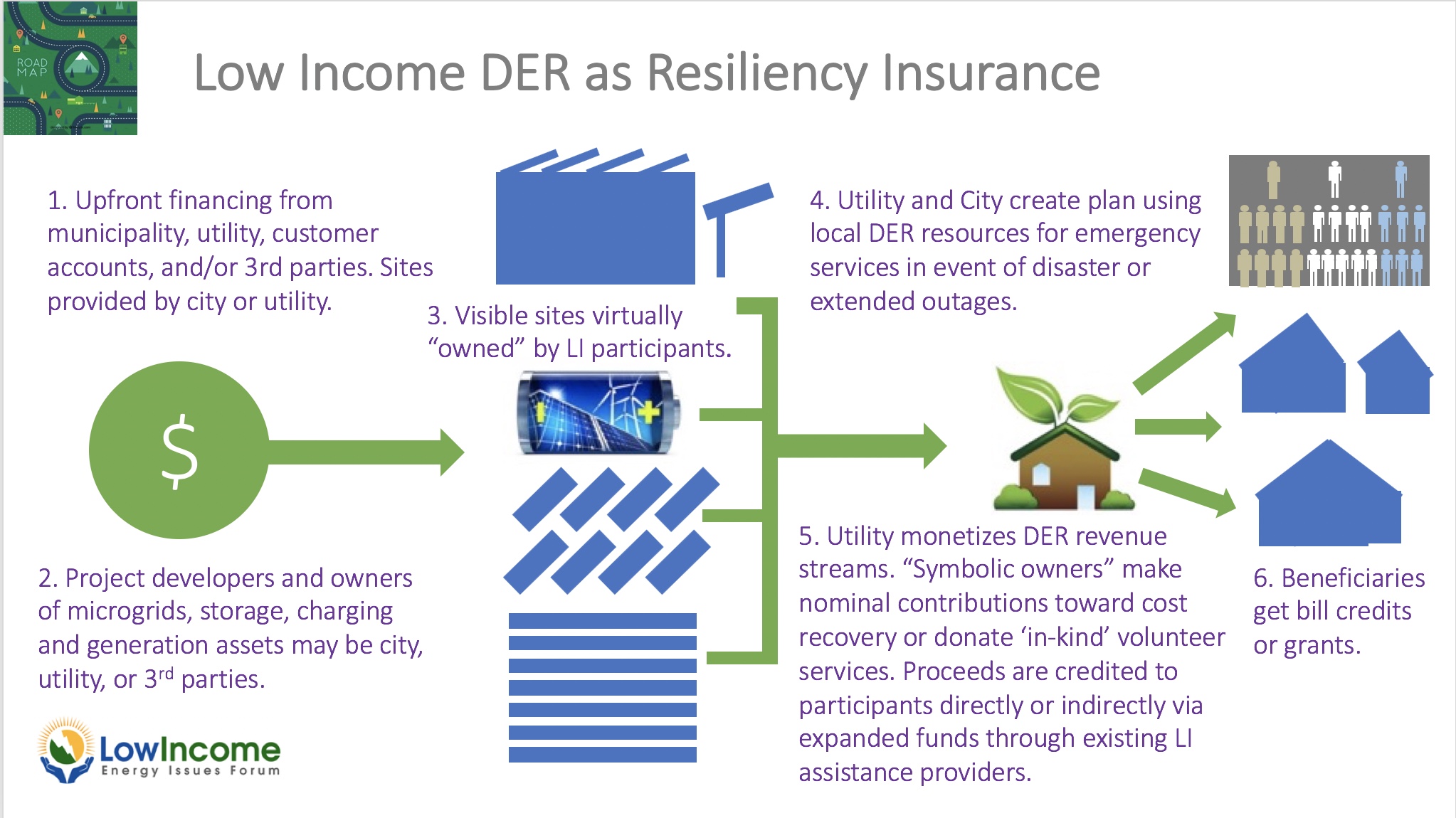Deploy DERs at scales providing locational, economic, resilience value
One advantage of Distributed Energy Resources (DERs) is that incremental renewables and storage are financed with distributed—instead of collective—investment. A significant limitation is they are owned by and operated for the benefit of those who made those investments. At the moment, most of these privately-held resources are not dispatchable, meaning that the entities that plan, control, and manage the flow of electricity to the grid cannot count on those resources being available for the public at large.
And while DERs are often not the cheapest way to produce electrons, they can provide other value, especially when generation resources are integrated with storage or microgrids
Locational value:
By placing a small scale generation, storage, and/or charging stations near the physical places where that electricity will be used.
Economic value:
By placing an installation in a very specific location determined by resource planning engineers, a utility can save money by avoiding the need to build a far more expensive substation or peaker plant to serve a given neighborhood.
Resilience:
Designing an installation so it can operate independently of the grid (AKA islanding mode) when needed, allows that facility or microgrid to serve as a community resource in emergency situations.
Accelerate value
In order to advance penetration of DERs, new regulatory and transaction issues needs to be resolved
Monetize the commodity
How to monetize the commodity produced so the developer of a given project sees a return on their upfront capital investment when the ultimate purchaser of the electricity pays the parties maintaining the installation.
Provide real-time operational controls
Another necessary component, under development by several software companies, is providing complex, real-time operational controls to align variable demand and utility-managed capacity with private supplies of intermittent resources at the distribution level.
Expand customer awareness and engagement
Creative approaches are working
There are examples of disadvantaged communities, with residents who cannot afford to participate in conventional community solar subscription programs, that are monetizing the commodity output of DERs through guaranteed off-takers (utilities or local corporations) and distributing the proceeds through established energy assistance providers. Because “ownership” of shared resources is virtual, the symbolism can be extended to combine small, visible assets (like solar bus stop shelters or parking canopies) with more productive, large-scale solar or wind farms that could be sited in remote locations.
See actual projects in the Resources Section

